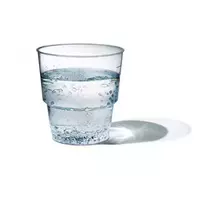Carbonated water

Carbonated water (the obsolete name is effervescent water), and in the common people, soda or fizz refers to popular cooling and soft drinks. Nowadays, some nations can no longer imagine their lives without sparkling water. For example, the average statistical resident of America drinks up to 180 liters of drink per year, which is almost four times the level of consumption of soda since its invention.
For comparison, in China, people consume only 20 liters of sparkling water per year, and in the countries of the post-Soviet space - 50 liters. The United States is ahead of the world not only in terms of the consumption of carbonated water, but also in its manufacture. According to statistics, carbonated water and drinks based on it account for 73% of the total production of non-alcoholic products in America.
Composition of carbonated water
Carbonated water contains either ordinary drinking water or mineral water, which is saturated not only with carbon dioxide, but also with a variety of food additives to give a certain taste, aroma and color. In the food industry, depending on the composition of carbonated water, the following types of drink are distinguished:
weakly carbonated water;
medium-degassed water;
highly carbonated water;
There is also a classification of carbonated water depending on the manufacturer's brand. For example, coca-cola, pesi-cola, tarhun, fanta, sprite or Pinocchio. Currently, the following major global producers of carbonated water are distinguished: Dr. Pepper Snapple Group, PepsiCo, Incorporated and The Coca-Cola Company.
The history of carbonated water began from ancient times, when a person discovered the natural sources of the drink. At the dawn of their existence, people used natural sparkling water exclusively for medicinal purposes. For example, the famous physician of Antiquity Hippocrates devoted a single chapter of his treatises on medical topics to natural sources of carbonated water.
The benefits of carbonated water
Already in those distant times, people knew and used in practice the benefits of carbonated water. Remarkably, natural carbonated water was taken by patients not only by mouth, but also used as the basis of medicinal baths with herbs. The benefits of sparkling water were so obvious and exceptional that in the era of scientific and technological progress at the end of the 18th century, industrialists drew attention to the natural drink.
Carbonated water began to be bottled and sold around the world, so mineral water appeared, which over time took a leading position. Synthetically, sparkling water was created for the first time by the English chemist Mr. Joseph Priestley, who back in the middle of the 18th century conducted experiments with gases that are released in the brewing process.
Priestley saturated ordinary water with gases, eventually received soda. Later, the Swedish craftsman Jacob Schwepp created a special apparatus for the production of sparkling water. Schwepp was the discoverer of soda for English consumers, which was the impetus for the founding of an empire of soft drinks under the brand name J. Schweppe & Co.
Damage to carbonated water
The popularity of sparkling water has two sides of the coin. On the one hand, the drink is considered medicinal and useful, and on the other hand, most doctors and nutritionists talk about the dangers of sparkling water for the human body. However, it is necessary to clearly distinguish between water of natural and synthetic origin, since natural carbonated water cannot be dangerous. On the contrary, as a result of excessive and uncontrolled consumption of sugary drinks, harm to carbonated water can result in diabetes mellitus, overweight problems and obesity.
carbonated water 43 kKal
Energy value of carbonated water (Ratio of proteins, fats, carbohydrates - ju):
Proteins: 0.1 g (~ 0 kCal)
Fats: 0.1 g (~ 1 kCal)
Carbohydrates: 10g (~ 40kCal)
Energy ratio (bj | y): 1% | 2% | 93%
 Español
Español Français
Français Português
Português Русский
Русский 简体中文
简体中文 繁體中文
繁體中文 日本語
日本語 한국어
한국어 العربية
العربية Türkçe
Türkçe Қазақ
Қазақ Deutsch
Deutsch Italiano
Italiano Українська
Українська
